This article was co-authored by Cameron Gibson, R.C.C. and by wikiHow staff writer, Jessica Gibson. Cameron Gibson is a Registered Clinical Counsellor in Vancouver, British Columbia. Cameron specializes in working with men to support their struggles with anxiety, depression, trauma, OCD, and developmental disabilities. He holds a BA in Psychology from Carleton University and an MA in Counseling Psychology from the City University of Seattle. Cameron is also the Program Director for Manifest Wellness, a men's mental health clinic, where he works to destigmatize mental health support for men and increase access to counseling.
There are 15 references cited in this article, which can be found at the bottom of the page.
This article has been viewed 21,275 times.
Intrusive thoughts might seem as though they come out of nowhere and they make it difficult to focus. These thoughts are often disturbing and can leave you feeling unsure of yourself. Fortunately, by identifying the anxiety that's causing your intrusive thoughts, you can begin to manage them. Work with a therapist or on your own to expose yourself to the fear or anxiety behind your thoughts so they become less powerful.
Steps
Identifying and Evaluating Intrusive Thoughts
-
1Accept that you're having intrusive thoughts. It's natural to feel panicked when you have intrusive thoughts, but recognize that intrusive thoughts are actually normal and manageable for most people. An intrusive thought is simply an unwelcome thought that might pop into your head when you're trying to focus on something else.[1]
- Some intrusive thoughts aren't negative. Instead, they're just irritating and make it difficult to focus on the task at hand.
-
2Keep a journal of intrusive thoughts and the things that trigger them. In order to challenge the thoughts, pay attention to what thoughts you're having. Write down the thoughts every time you have them and write down what you were doing when the thoughts came into your mind.[2] [3]
- If you prefer, download an app so you can easily track the thoughts on your phone or tablet.
- For example, you might write, "Struggling to fall asleep on Tues. I'm worried I'm going to hurt my pet."
Advertisement -
3Don't try to ignore the intrusive thoughts. Unfortunately, it's difficult to simply ignore troubling thoughts, especially because that usually causes you to think about them even more. Repressing the intrusive thoughts can make you have them more frequently or they may become more intense.[4]
Tip: Be patient with yourself and recognize that you're not a bad person for having these intrusive thoughts. Remind yourself that you're developing skills to tackle them and that you'll learn to work through the thoughts.
-
4Give yourself 10-20 minutes a day to consider your intrusive thoughts. Since you can't simply ignore the thoughts, tell yourself that there's a set time in your day when you can consider them. During this time, read through each of the intrusive thoughts that you wrote down. If it helps you focus on them, say them out loud.[5]
- Set a timer so you don't spend too much time reading over the thoughts.
-
5Ask yourself what a friend would say to you if they heard you speak the thoughts. Your friend might be surprised or shocked at your thoughts because they know that you'd never act on them. It's good for you to hear this reminder that your thoughts aren't a true indicator of your actions or beliefs.[6]
- For example, if you think, "I can't be trusted around animals because I think I'll hurt them," your friend might remind you that you've never hurt an animal before and that you are always caring around animals. You could also remind yourself that you care for your pet and that it loves you.
-
6Challenge yourself to turn the thought into a more positive or realistic view. Look through the list of intrusive thoughts again, but take a few minutes to change each thought into a positive statement. Identify the fear in each intrusive thought and find the positive. For example, if you worry that you'll let down your company when you make a big speech, tell yourself that you care about your job and being concerned is a normal thought.[7]
- For example, instead of saying, "I just know I'm going to get into a car accident when I leave for my trip," think, "I've had the car inspected, I'm all packed, and the car will safely get me to my destination."
- These positive thoughts can help you accept the thoughts and make them less intrusive in the future.
Reducing Your Stress and Anxiety
-
1Spend time with friends and family. You might feel like anxiety and intrusive thoughts prevent you from interacting with people, especially if you're worried that you'll act on your thoughts. Don't give the thoughts power over your life. Instead, let your friends and family know about your struggles. Developing a support network makes intrusive thoughts less threatening.[8]
- Surround yourself with positive people. If you find that a friend or family member is overly negative or critical of your condition, you don't need to spend time with that person.
-
2Develop calming skills or hobbies to relax throughout the day. You're more likely to experience intrusive thoughts if you're anxious or stressed. Think about activities that instantly help to calm you so you can manage anxiety. Consider trying:[9]
- Meditation
- Yoga
- Deep breathing
- Listening to music
-
3Reach out to a support group for help. It's easy to feel like you're the only one experiencing intrusive thoughts on a daily basis. Ask your doctor to recommend a support group or check local community centers to find a group. The most effective groups have a cognitive behavior therapist that leads the group so everyone feels supported and listened to.[10]
- You can also search online for support groups. Some OCD-support groups meet online or over the phone.
-
4Get regular physical activity throughout the week. Aerobic exercise can improve blood flow to your brain, which may help you manage anxiety. Some people find that exercising helps to work through intrusive thoughts. Try to do around 5 30-minute workouts a week. You could:[11]
- Bike
- Run
- Swim
- Hike
- Use an elliptical machine
-
5Get around 8 hours of sleep every night. If you go to bed earlier and get quality sleep, you're better able to manage intrusive thoughts. Waking up rested and refreshed can also help you realistically assess the intrusive thoughts that you have, which makes them less powerful.[12]
- If you're struggling to fall asleep, ask your doctor to recommend non-habit forming sleep aids. These can help you regulate your sleep cycles.
Tip: Limit your caffeine and alcohol intake so you don't struggle to fall asleep. Drinking alcohol and smoking can actually make you feel more anxious.[13]
Getting Help for Intrusive Thoughts
-
1Create an exposure hierarchy if you choose to see a therapist. To begin exposure and response prevention (ERP), you'll talk with a mental health therapist about what you fear and are anxious about. Then, you'll sort your anxieties into a list that you can begin to work on. For example, if you fear catching a disease from swimming in a public pool, your exposure hierarchy might look like this:[14]
- Drive by the pool and see everyone swimming
- Go to the pool with a friend and watch people swim
- Take your shoes off and walk around the pool
- Dip your feet in the swimming pool
- Get into the water up to your waist
- Spend 5 minutes in the pool
-
2Work with your therapist to expose yourself to things that make you anxious. You'll usually meet at your therapist's office unless there's a certain place that triggers your anxieties. Your therapist will gradually expose you to things that you fear. Over time, you'll learn how to manage anxieties so you won't have intrusive thoughts about them anymore. This might seem challenging at first, but you'll build skills to manage your anxiety.[15]
- For example, if you fear that you'll harm an animal, the therapist might have a pet in their office during your session. Over time, you'll realize that you don't intend to hurt it.
Tip: Once you work through things that cause minor anxiety, you'll begin to expose yourself to things that create greater fear. Eventually, you'll realize that you won't actually act on the intrusive thoughts you're having.
-
3Get a medical diagnosis from a psychiatrist if you'd like to try medication. Unlike therapists, psychiatrists can prescribe medication. To find a psychiatrist, ask your doctor to recommend someone who's trained in cognitive-behavioral therapies.[16]
- Once your psychiatrist or doctor makes a diagnosis, they'll discuss a treatment plan with you. This is a great time to ask questions you might have, so you feel comfortable with the plan.
-
4Talk with your doctor about taking medication to manage OCD. You and your doctor might decide to treat your anxiety with Selective Serotonin Reuptake Inhibitors (SSRIs), which increase the levels of serotonin in your brain and treats OCD. You'll need to work closely with your doctor to adjust your medication levels over time.[17]
- You may notice side effects in the first weeks after starting the medication. These side effects may include nausea, nervousness, and trouble sleeping.
- Don't be afraid to reach out to your doctor if you think your medication needs to be adjusted. Let your doctor know what's working or what's problematic about the medication.
Expert Q&A
Did you know you can get expert answers for this article?
Unlock expert answers by supporting wikiHow
-
QuestionWhat should I do if my thoughts are making me scared?
 Rachel ClissoldRachel Clissold is a Life Coach and Consultant in Sydney, Australia. With over six years of coaching experience and over 17 years of corporate training, Rachel specializes in helping business leaders move through internal roadblocks, gain more freedom and clarity, and optimize their company’s efficiency and productivity. Rachel uses a wide range of techniques including coaching, intuitive guidance, neuro-linguistic programming, and holistic biohacking to help clients overcome fear, break through limitations, and bring their epic visions to life. Rachel is an acclaimed Reiki Master Practitioner, Qualified practitioner in NLP, EFT, Hypnosis & Past Life Regression. She has created events with up to 500 people around Australia, United Kingdom, Bali, and Costa Rica.
Rachel ClissoldRachel Clissold is a Life Coach and Consultant in Sydney, Australia. With over six years of coaching experience and over 17 years of corporate training, Rachel specializes in helping business leaders move through internal roadblocks, gain more freedom and clarity, and optimize their company’s efficiency and productivity. Rachel uses a wide range of techniques including coaching, intuitive guidance, neuro-linguistic programming, and holistic biohacking to help clients overcome fear, break through limitations, and bring their epic visions to life. Rachel is an acclaimed Reiki Master Practitioner, Qualified practitioner in NLP, EFT, Hypnosis & Past Life Regression. She has created events with up to 500 people around Australia, United Kingdom, Bali, and Costa Rica.
Certified Life Coach
-
QuestionWhy do I have intrusive thoughts?
 Cameron Gibson, R.C.C.Cameron Gibson is a Registered Clinical Counsellor in Vancouver, British Columbia. Cameron specializes in working with men to support their struggles with anxiety, depression, trauma, OCD, and developmental disabilities. He holds a BA in Psychology from Carleton University and an MA in Counseling Psychology from the City University of Seattle. Cameron is also the Program Director for Manifest Wellness, a men's mental health clinic, where he works to destigmatize mental health support for men and increase access to counseling.
Cameron Gibson, R.C.C.Cameron Gibson is a Registered Clinical Counsellor in Vancouver, British Columbia. Cameron specializes in working with men to support their struggles with anxiety, depression, trauma, OCD, and developmental disabilities. He holds a BA in Psychology from Carleton University and an MA in Counseling Psychology from the City University of Seattle. Cameron is also the Program Director for Manifest Wellness, a men's mental health clinic, where he works to destigmatize mental health support for men and increase access to counseling.
Registered Clinical Counsellor & Program Director Intrusive thoughts are often a symptom of a problem, rather than the problem itself. For instance, if you're having intrusive thoughts about failure, it might be due to unmanageable stress at work. If you can work backwards to find the actual problem, then release some of the discomfort and tension associated with the problem, those intrusive thoughts will often start to fade away.
Intrusive thoughts are often a symptom of a problem, rather than the problem itself. For instance, if you're having intrusive thoughts about failure, it might be due to unmanageable stress at work. If you can work backwards to find the actual problem, then release some of the discomfort and tension associated with the problem, those intrusive thoughts will often start to fade away.
Warnings
- If intrusive thoughts give you extreme anxiety or distress, seek medical help as soon as possible. You don't deserve to be having those thoughts. You deserve to live a healthy normal life.⧼thumbs_response⧽
- If you are diagnosed with OCD, a therapist or psychiatrist can help you work through your thought process or prescribe you medication⧼thumbs_response⧽
- Remember, it is best to discuss your intrusive thoughts with a therapist, psychologist, or psychiatrist as they know what you're doing correctly, or incorrectly (causing the thoughts to become more aggressive and anxiety-provoking) as they have dealt with patients who are in your position in the past.⧼thumbs_response⧽
References
- ↑ https://www.psychologytoday.com/us/blog/am-i-normal/201110/intrusive-thoughts-normal-or-not
- ↑ https://www.apa.org/monitor/sep01/keepdiary
- ↑ Rachel Clissold. Certified Life Coach. Expert Interview. 26 August 2020.
- ↑ https://www.ncbi.nlm.nih.gov/pubmed/15701355
- ↑ https://www.healthcentral.com/slideshow/8-ways-to-stop-obsessing-or-ruminating
- ↑ https://www.helpguide.org/articles/anxiety/obssessive-compulsive-disorder-ocd.htm
- ↑ https://health.clevelandclinic.org/turn-around-negative-thinking/
- ↑ https://www.ncbi.nlm.nih.gov/pmc/articles/PMC7439968/
- ↑ https://www.helpguide.org/articles/anxiety/obssessive-compulsive-disorder-ocd.htm
- ↑ https://beyondocd.org/information-for-college-students/join-a-support-group
- ↑ http://health.sunnybrook.ca/fitness/exercise-obsessive-compulsive-disorder/
- ↑ https://www.psychiatryadvisor.com/home/topics/sleep-wake-disorders/sleep-deprivation-may-impair-the-ability-to-regulate-intrusive-thoughts/
- ↑ https://www.ncbi.nlm.nih.gov/pmc/articles/PMC3181622/
- ↑ https://www.helpguide.org/articles/anxiety/obssessive-compulsive-disorder-ocd.htm
- ↑ https://kids.iocdf.org/professionals/mh/about-erp-for-pediatric-ocd/
- ↑ https://www.nimh.nih.gov/health/publications/obsessive-compulsive-disorder-when-unwanted-thoughts-take-over/index.shtml
- ↑ https://www.ncbi.nlm.nih.gov/books/NBK279561/
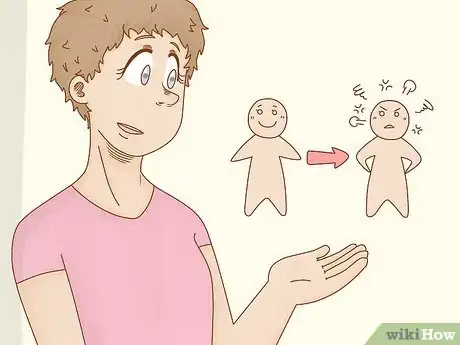





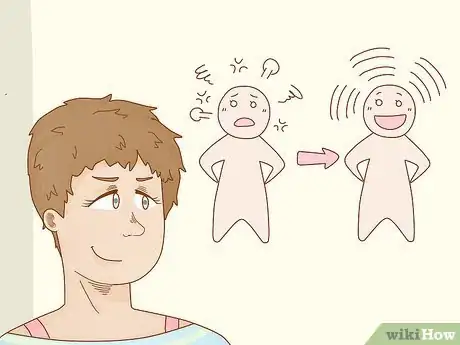





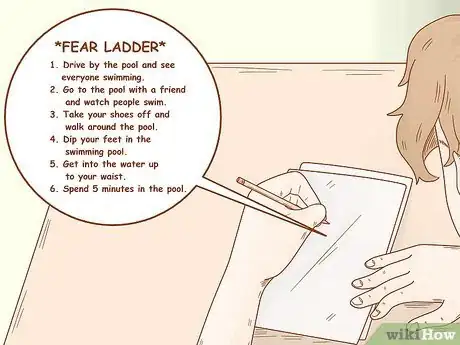



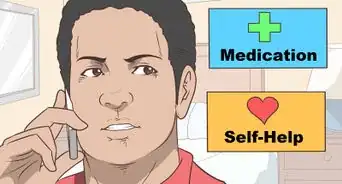






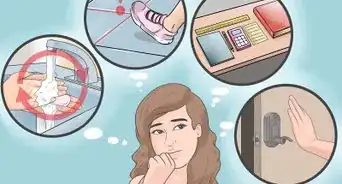









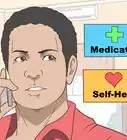






































Medical Disclaimer
The content of this article is not intended to be a substitute for professional medical advice, examination, diagnosis, or treatment. You should always contact your doctor or other qualified healthcare professional before starting, changing, or stopping any kind of health treatment.
Read More...